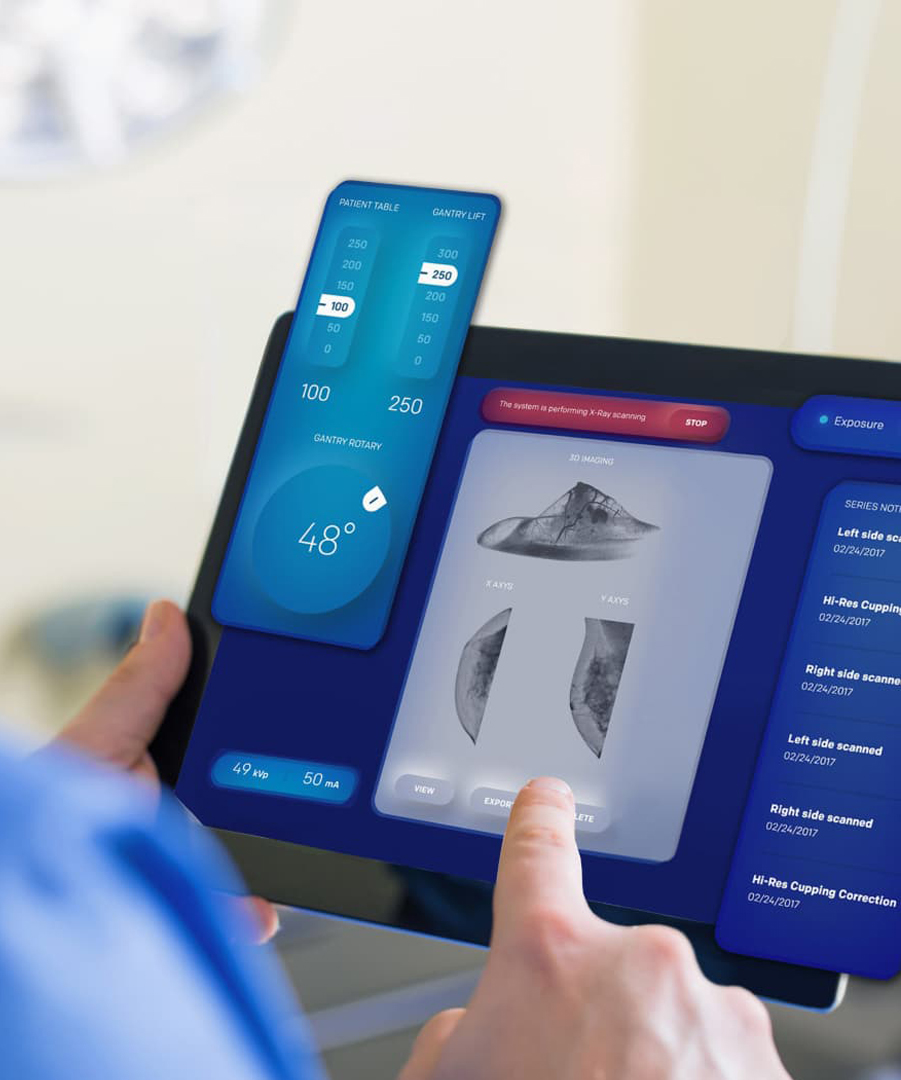


Xe chữa cháy bọt, là thành viên thiết yếu của hệ thống chữa cháy hiện đại, đóng vai trò không thể thay thế trong việc dập tắt các loại hỏa hoạn. POWERSTAR chuyên nghiên cứu, phát triển và sản xuất các loại xe chữa cháy bọt, đồng thời có thể tùy chỉnh xe chữa cháy bọt với khung gầm và sức chứa của nhiều thương hiệu khác nhau theo nhu cầu của khách hàng. Bao gồm các mẫu xe như: Xe cứu hỏa bọt ISUZU Xe chữa cháy bọt HOWO, xe chữa cháy bọt FAW và xe chữa cháy bọt Shacman, đáp ứng các yêu cầu cụ thể của nhiều tình huống khác nhau như nhà máy hóa dầu, sân bay và chữa cháy đô thị. Bài viết này cung cấp thông tin chi tiết về định nghĩa, nguyên lý hoạt động, ưu điểm nổi bật và các ứng dụng chính của xe chữa cháy bọt, giúp bạn hiểu rõ hơn về giá trị của thiết bị chữa cháy chuyên dụng này.
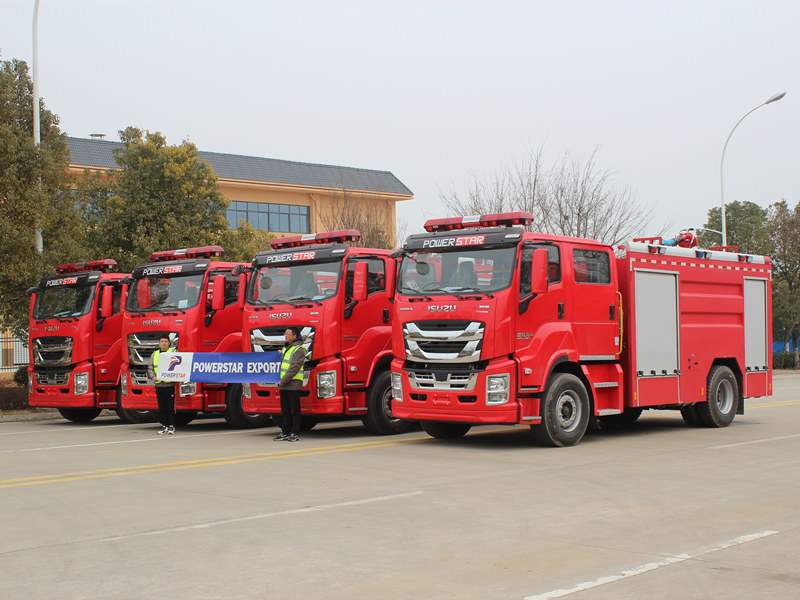
1. Xe chữa cháy bọt là gì?
Xe chữa cháy bọt là một loại xe chữa cháy chuyên dụng được trang bị thiết bị trộn bọt và hệ thống phun. POWERSTAR sản xuất nhiều loại xe chữa cháy bọt sử dụng khung gầm chất lượng cao từ các thương hiệu uy tín trong nước và quốc tế như ISUZU, HOWO, FAW và Shacman, kết hợp với hệ thống định lượng bọt hiệu quả. Những xe này chủ yếu được sử dụng để dập tắt các đám cháy liên quan đến chất lỏng dễ cháy như dầu và hóa chất. Khác với xe chữa cháy bồn nước thông thường, xe chữa cháy bọt không chỉ chở nước mà còn được trang bị bồn chứa bọt lỏng chuyên dụng và hệ thống định lượng thông minh, trộn nước và bọt cô đặc theo tỷ lệ cụ thể để tạo thành bọt chữa cháy.
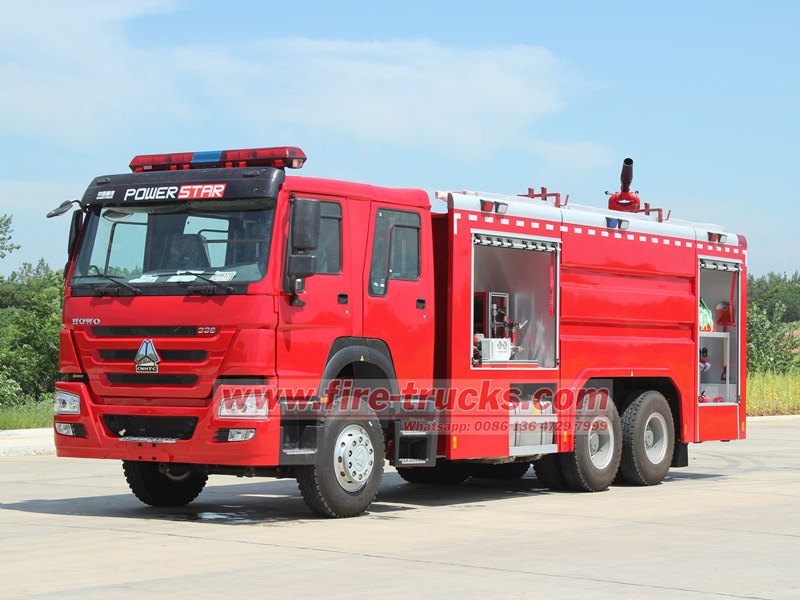
Những xe cứu hỏa này thường được cải tiến từ khung gầm xe tải hạng nặng và có thể được phân loại thành xe cứu hỏa bọt cỡ lớn, cỡ trung bình và cỡ nhỏ dựa trên dung tích chất lỏng của chúng. POWERSTAR 'S Xe cứu hỏa bọt HOWO Xe chữa cháy bọt cỡ trung ISUZU, được cải tiến trên khung gầm ISUZU, cân bằng giữa khả năng cơ động và khả năng chữa cháy. Trong những năm gần đây, với những tiến bộ công nghệ, xe chữa cháy bọt cỡ nhỏ được cải tiến trên nền xe bán tải đã xuất hiện, mang lại sự linh hoạt và nhanh nhẹn, đặc biệt phù hợp cho các khu vực hẹp và phản ứng nhanh với các đám cháy ban đầu. Giá trị cốt lõi của xe chữa cháy bọt nằm ở khả năng tạo và phun bọt chữa cháy nhanh chóng, bao phủ hiệu quả bề mặt vật liệu đang cháy để cô lập oxy và giảm nhiệt độ, từ đó dập tắt đám cháy nhanh chóng.
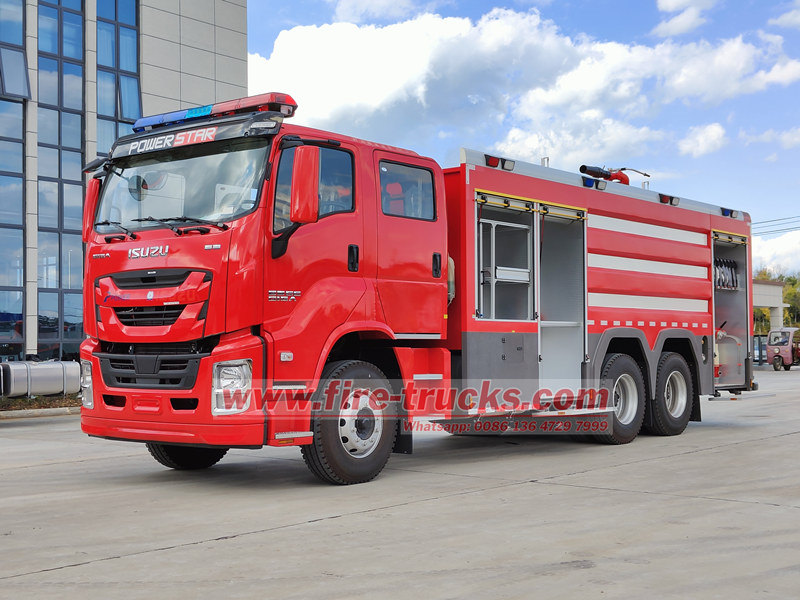
2. Nguyên lý hoạt động của xe chữa cháy bọt
Nguyên lý hoạt động của xe chữa cháy bọt dựa trên hệ thống pha trộn và phân phối chất lỏng chính xác. Khi đến hiện trường hỏa hoạn, người vận hành trước tiên sẽ chọn tỷ lệ bọt phù hợp (thường là 3% hoặc 6%) dựa trên tình hình đám cháy. Máy bơm chữa cháy hút nước từ bể chứa nước, trong khi máy bơm bọt hút dung dịch bọt cô đặc từ bể chứa bọt. Hai thành phần này được tự động trộn theo tỷ lệ đã cài đặt trong máy trộn định lượng.
Dung dịch bọt hỗn hợp sau đó được dẫn qua vòi rồng đến các đầu phun bọt hoặc vòi phun bọt, tại đây bọt được hút không khí trong quá trình phun để tạo thành bọt chữa cháy. Bọt này có độ phủ và độ bền tuyệt vời, giúp cô lập hiệu quả vật liệu đang cháy khỏi oxy. Đối với xe chữa cháy bọt cỡ lớn, đầu phun bọt có thể phun xa hơn 70 mét, trong khi hệ thống bọt nhỏ được cải tiến trên xe bán tải phù hợp hơn cho việc chữa cháy chính xác, tầm gần.
Đặc biệt, xe chữa cháy bọt cao cấp hiện đại được trang bị hệ thống điều khiển thông minh, có thể điều chỉnh tỷ lệ pha trộn và chế độ phun theo thời gian thực để thích ứng với các loại đám cháy khác nhau. Một số mẫu xe còn tích hợp hệ thống chữa cháy bột khô, tạo nên khả năng chữa cháy tổng hợp, giúp cải thiện đáng kể hiệu quả.

3. Ưu điểm đáng kể của xe chữa cháy bọt
Xe cứu hỏa bọt
Xe cứu hỏa mini mang lại nhiều ưu điểm vượt trội so với xe cứu hỏa truyền thống, khiến chúng trở thành thiết bị chữa cháy được ưu tiên sử dụng tại các địa điểm có nguy cơ cháy nổ cao như nhà máy hóa dầu và sân bay. Những ưu điểm cốt lõi của chúng chủ yếu được thể hiện ở các khía cạnh sau:
1. Hiệu suất chữa cháy cao:
Bọt chữa cháy có thể nhanh chóng bao phủ các khu vực cháy lớn, đặc biệt là cháy dầu, với hiệu quả dập tắt đám cháy cao hơn gấp 10 lần so với chỉ dùng nước. Lớp bọt không chỉ cô lập oxy mà còn ngăn ngừa hiệu quả sự bay hơi của hơi nhiên liệu, tránh cháy lại.
2. Tiết kiệm nước:
So với chữa cháy bằng nước, chữa cháy bằng bọt giúp giảm đáng kể lượng nước sử dụng. Điều này đặc biệt quan trọng đối với việc chữa cháy ở những khu vực có nguồn nước hạn chế và cũng là lý do tại sao các thiết bị nhỏ như xe cứu hỏa bán tải có thể đóng vai trò quan trọng.
3. Độ an toàn cao:
Xe chữa cháy bọt thường được trang bị màn hình bọt điều khiển từ xa, cho phép lính cứu hỏa hoạt động từ khoảng cách an toàn. Một số mẫu xe cao cấp còn được trang bị camera ảnh nhiệt và đầu dò khí độc, đảm bảo an toàn hơn nữa cho lính cứu hỏa.
4. Tính linh hoạt:
Xe chữa cháy bọt hiện đại thường tích hợp nhiều chức năng chữa cháy, có thể phun bọt, nước tinh khiết hoặc sương nước, khiến chúng trở thành phương tiện đa năng. Ngay cả các hệ thống bọt nhỏ trên nền xe bán tải cũng có khả năng chuyển đổi linh hoạt này.
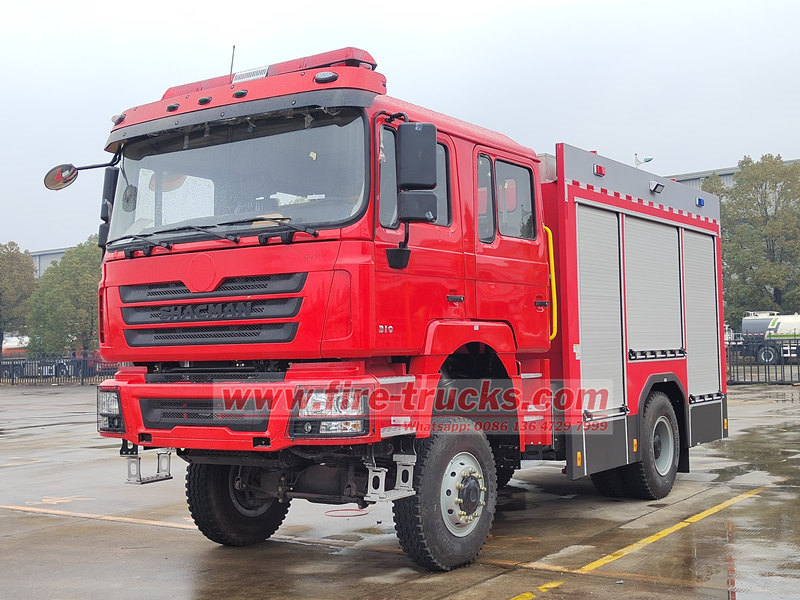
4. Ứng dụng chính của xe chữa cháy bọt
Các tính năng chuyên biệt của xe chữa cháy bằng bọt khiến chúng trở nên không thể thiếu trong một số lĩnh vực độc đáo, bao gồm:
• Ngành công nghiệp hóa dầu:
Đây là lĩnh vực ứng dụng chính của xe chữa cháy bọt. Các đám cháy trong khu vực bể chứa dầu, nhà máy lọc dầu và nhà máy hóa chất thường liên quan đến chất lỏng dễ cháy, khiến xe chữa cháy bọt trở thành thiết bị ưu tiên cho những tình huống như vậy. Các khu vực kho chứa dầu lớn thường được trang bị nhiều xe chữa cháy bọt công suất lớn để tạo thành mạng lưới chữa cháy ba chiều.
• Phòng cháy chữa cháy tại sân bay:
Các sân bay hàng không dân dụng phải được trang bị xe chữa cháy bọt chuyên dụng (còn gọi là "xe can thiệp nhanh"). Những xe này có khả năng tăng tốc vượt trội, cho phép chúng tiếp cận bất kỳ vị trí nào trên đường băng trong thời gian ngắn để dập tắt các đám cháy nhiên liệu hàng không. Một số sân bay cũng triển khai xe chữa cháy bọt hạng nhẹ đặt trên bệ nâng làm đơn vị phụ trợ.
• Phòng cháy chữa cháy toàn diện đô thị:
Với sự gia tăng của các tòa nhà cao tầng và không gian ngầm trong đô thị, xe chữa cháy bọt đang ngày càng đóng vai trò quan trọng trong công tác chữa cháy đô thị. Chúng không chỉ có thể dập tắt các đám cháy thông thường mà còn xử lý hiệu quả các tình huống đặc biệt như cháy xe trong bãi đậu xe ngầm và cháy máy biến áp.
• Khu công nghiệp:
Nhiều nhà máy sản xuất, kho bãi hậu cần và các cơ sở khác đang dần được trang bị xe chữa cháy bọt hoặc hệ thống bọt nhỏ. Đặc biệt ở những nơi lưu trữ khối lượng lớn vật liệu dễ cháy, xe chữa cháy bọt mang lại khả năng bảo vệ an toàn cháy nổ đáng tin cậy hơn.
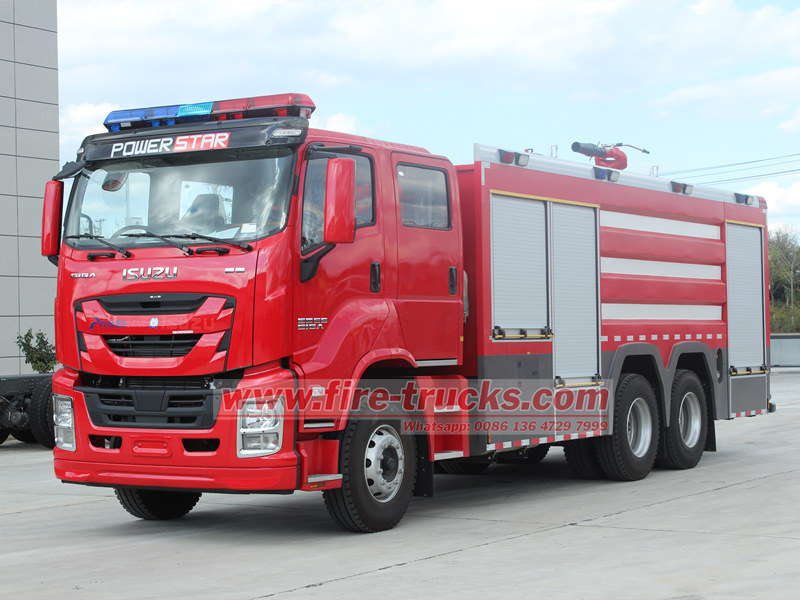
Bạn có thể quan tâm đến các thông tin sau